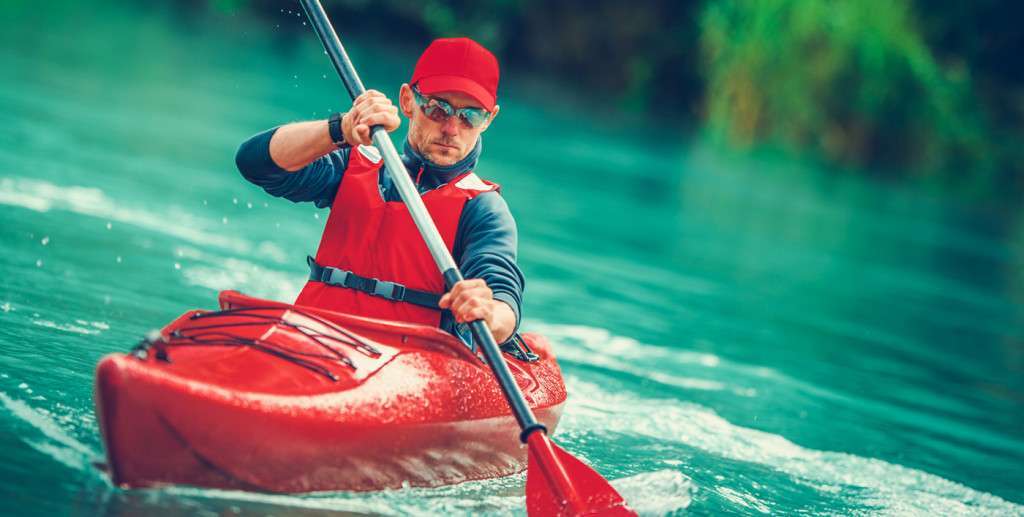Kayak paddles come in a variety of sizes, shapes and prices. Here’s how to choose the one that’s right for you and your kayak.
Selecting the Proper Kayak Paddle
Choosing the right kayak paddle is as important as selecting the right boat. Both are designed for specific conditions and tasks, and while any paddle will move any kayak, they work most effectively when properly matched. When selecting your paddle, you will want to consider the following three issues: the type of paddling you do, the size that’s right for you and your kayak, and the amount you wish to spend.
Touring or Whitewater Kayak?
For the paddle to match the task, you should choose based on the type of paddling you do most frequently. Whitewater paddling requires rapid acceleration and short bursts of speed, while in touring, endurance is paramount. The paddle’s blades are designed to maximize effect while minimizing effort.
The whitewater blade is short and wide. This allows the kayaker to sprint through waves or around hazards in fast moving water. The larger area displaces more water, and moves the paddler more quickly. The touring blade is narrower. It provides less resistance, and is therefore less fatiguing, an important quality for a paddle you would use on an all-day tour.
Pick the Paddle that Matches Your Kayak
Aside from the obvious aspect of picking a touring paddle for touring boats (which tend to be long and thin), and a whitewater paddle for whitewater boats, (which are short and wide) your paddle needs to match your size as well. A whitewater paddle is generally anywhere from 190-200cm, but if your boat is very wide or you are very tall, you might need one as long as 205cm.
Touring Paddles are usually longer and can be anywhere from 210-250cm, but average around 220—230cm. If your boat is very narrow, you will want a slightly shorter paddle. Conversely, if you are very tall you will want a longer one. Sit-on-top kayaks require longer paddles because the higher seat puts the paddler further from the water.
Kayak Paddles: Composition VS Cost
Paddles come in a confusingly wide variety of materials and prices. They can be made of wood, aluminum, fiberglass, plastic, Kevlar, titanium, or carbon fiber, and can range in price from $100 to $800 or more. The materials can be combined in an almost infinite number of ways. A paddle with carbon fiber blades and a Kevlar or carbon shaft will be considerably lighter than its aluminum and plastic or all wood counterpart.
It will also be six or seven times the price. The weight difference between two comparable paddles might be only a few ounces, but after thousands of strokes in the course of an all-day tour, the lower weight may well translate into less fatigue.
Advanced Technology Kayak Paddles
The lightest paddles are made of the most advanced materials, and go for the highest prices, however, Kevlar and carbon blades are not recommended for constant use around rocky shorelines. Most kayakers choose something in the middle of the range, selecting paddles made of a combination of materials. The combination of different materials affects the way the paddle handles. A paddle with a heavy shaft and lighter blades will swing more easily than one with a lighter shaft and heavier blades.
Emergency Kayak Paddle!
Since there are few things worse than being up the creek without a paddle, you should consider bringing a spare whenever your trips take you further from your destination than you can comfortably swim while towing your boat, or in rough water where capsize is likely. For safe kayaking, consider buying a spare two piece paddle that can be fastened to your boat’s deck, or at the very least, a paddle leash.

